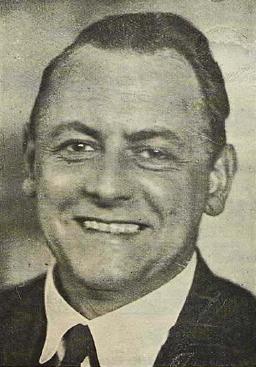Schwitters (1921) in: Abstract Art, Anna Moszynska, Thames and Hudson, London 1990, p. 68-69.
1920s
Famous Kurt Schwitters Quotes
Source: 1940s, I is Style (2000), p. 48 : quoted by Margareth Miller to Oliver Kaufmann [the first principle aim is his Merzbau]
Source: 1940s, I is Style (2000), p. 47 : in a letter to Käthe Steinitz (24 June 1945)
Source: 1940s, I is Style (2000), pp. 100-101 : in: 'That is my confession I have to make MERZ' (1940 – 1946), Kurt Schwitters.
Source: 1940s, I is Style (2000), p. 48 : in a letter to Edgar Kaufmann, 16 July 1946
1930s
Source: 'I and my purpose', in the journal 'Merz', no. 21, (1931)
Kurt Schwitters Quotes about art
Manifesto Proletkult, 1923
Schwitters, in discussion with political Dadaists as Huelsenbeck.
1920s
quote, 1930
As quoted in Kurt Schwitters, das literarische Werk, ed. Friedhelm Lach, Dumont Cologne, 1973 – 1981, Vol. 5, p. 335.
1930s
1920s
Source: the article 'i ein Manifest' (or 'i-manifest'), Kurt Schwitters, in Merz 2. 1923; as quoted in Kurt Schwitters Merzbau: The Cathedral of Erotic Misery, by Elizabeth Burns Gamard, Princeton Architectural Press, New York, 2000, p. 116
Source: 1940s, I is Style (2000), p. 46 : in a letter (22 October 1941) to Käthe Steinitz, written from the internment camp on Isle of Man, England.
1910s
Source: 'Merz Painting' (1919); as quoted in I is Style, ed. Siegfried Gohr & Gunda Luyken, NAI Publishers, Rotterdam 2000, p. 91.
Kurt Schwitters Quotes about painting
Source: 1940s, I is Style (2000), p. 45 : in a letter (11 November 1940) to Käthe Steinitz, sent from the internment camp on Isle of Man, England.
Source: 1940s, I is Style (2000), p. 100 : in 'My art and My live' (1940 – 1946), Kurt Schwitters.
In a letter to Henriette Schwitters, (16 June 1939); as quoted in I is Style, ed. Siegfried Gohr & Gunda Luyken, Stedelijk Museum Amsterdam, NAI Publishers, Rotterdam 2000, p. 41.
1930s
In a letter to w:Galka Scheyer, January 1926; as quoted in I is Style, ed. Siegfried Gohr & Gunda Luyken, NAI Publishers, Rotterdam 2000, p. 34.
1920s
In a letter to w:Galka Scheyer, 24 July 1937; as quoted in I is Style, ed. Siegfried Gohr & Gunda Luyken, Stedelijk Museum Amsterdam, NAI Publishers, Rotterdam 2000, p. 41.
1930s
Source: http://www.sprengel-museum.de/bilderarchiv/sprengel_deutsch/fotos/merzbau1933_530.jpg
In his 'Autobiography of Kurt Schwitters' (6 June 1926), sent to Hans Hilderbrandt; as quoted in I is Style, ed. Siegfried Gohr & Gunda Luyken, NAI Publishers, Rotterdam 2000, p. 92.
1920s
Kurt Schwitters Quotes
Quote in his letter to Hans Richter, c. 1916; as quoted in 'Hannover-Dada' by Hans Richter; as quoted in I is Style, ed. Siegfried Gohr & Gunda Luyken, commissioned by w:Rudi Fuchs, director of the Stedelijk Museum Amsterdam, NAI Publishers, Rotterdam 2000, p. 151
1910s
1920s
Source: 'Merz. Für den Ararat geschrieben' (1920); as quoted in Kurt Schwitters Merzbau: The Cathedral of Erotic Misery, by Elizabeth Burns Gamard, Princeton Architectural Press, New York, 2000, p. 40, note 16
1920s
Source: 'Merz. Für den Ararat geschrieben' (1920); as quoted in Kurt Schwitters, das literarische Werk, ed. Friedhelm Lach, Dumont Cologne, 1973–1981, Vol. 5 p. 77.
1920s
Source: 'Consistent Poetry Art', Schwitters' contribution to 'Magazine G', No. 3, 1924, ed. Hans Richter.
1920s
Source: 'Consistent Poetry Art', Schwitters' contribution to 'Magazine G', No. 3, 1924, ed. Hans Richter; as quoted in I is Style, ed. Siegfried Gohr & Gunda Luyken, (commissioned by Rudi Fuchs, director of the Stedelijk Museum Amsterdam), NAI Publishers, Rotterdam 2000, p. 151.
Source: 1940s, I is Style (2000), p. 48 : in a letter (30 April 1946) to Oliver Kaufmann, (department of Painting and Sculpture of the MOMA, New York).
1910s
Source: 'Merz Painting' (1919); as quoted in I is Style, ed. Siegfried Gohr & Gunda Luyken, NAI Publishers, Rotterdam 2000, p. 91.
“We, the founders of Dada-movement try to give time its own reflection in the mirror.”
In first edition of the journal Merz, 1923.
1920s
1920s
Source: 'Consistent Poetry Art', Schwitters' contribution to 'Magazine G', No. 3, 1924, ed. Hans Richter.
1920s
Source: 'Die Blume Anna', a poem of Kurt Schwitters, published in 'Consistent Poetry Art' contribution to 'Magazine G', No. 3, ed. Hans Richter, 1924
1920s, Huelsendada', Kurt Schwitters, 1920
As quoted in Kurt Schwitters Merzbau: The Cathedral of Erotic Misery, by Elizabeth Burns Gamard, Princeton Architectural Press, 1 Apr 2000, p. 75, note 69
1920s
